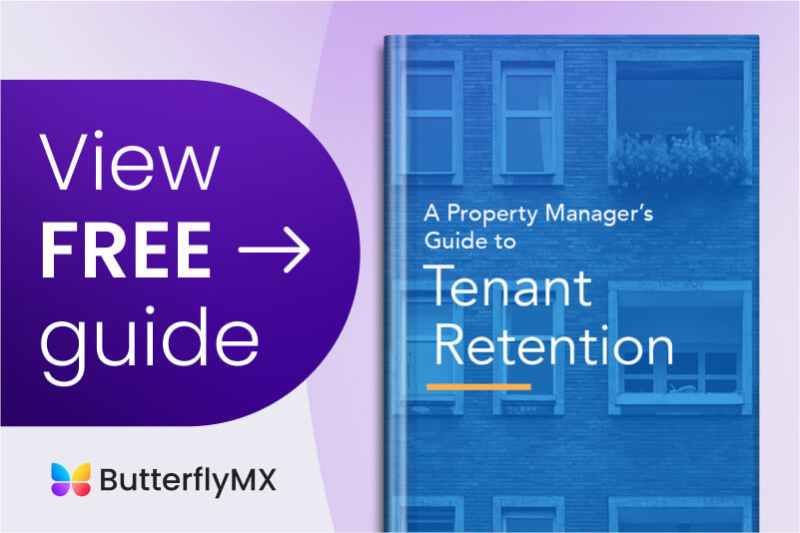
Working in real estate, you know that renters come and go for any number of reasons. But if a tenant cites the quality of the neighborhood for leaving, you may be surprised to learn that there’s something you can do about that. By learning about the third place and implementing its ideas on your property, you can change your surrounding built environment for the better — and retain more residents while you’re at it.
In this post, we explain what third places are and why they matter to real estate professionals. Then, we go over the steps you should take to turn your property into a third place.
This post covers:
- What is the third place theory?
- Why do third places matter in real estate?
- How to turn your property into a third place
What is the third place theory?
The third place is a concept that urban planners use to describe places where a person might spend their free time. People need breaks from the demands of both their homes and their workplaces. So in an ideal neighborhood, they find rest in a third place.
In this conception of the world, the “first place” is home and the “second place” is the workplace — leaving third places as any place where a person can explore hobbies, see friends, and meet new people.
You’ve certainly experienced a third place firsthand. When you get off work, and you don’t want to stay home, where do you like to spend your time?
Examples of public spaces that double as third places are parks or public libraries. But many businesses and stores aim for third place status, too. The best third places provide a place for a neighborhood to come together — and businesses (and the buildings that host them) benefit by getting repeat business from locals.
With the right management, any establishment can become more than a business and attain third place status.
Common examples of commercial third places are:
- Coffee shops
- Bookstores
- Bowling alleys
- Bars
- Barber shops

Why do third places matter in real estate?
Third places matter to real estate owners, developers, and managers because vibrant third places create vibrant neighborhoods — which boosts property values and resident retention rates.
And while prospects might not know the term, a short walk around your neighborhood will tell them everything they need to know. According to a study commissioned by Apartment Guide, over half of renters think that an apartment’s location is more important than the unit itself!
You may have already added amenities, like coworking spaces or a gym, to your property. But even though you may have cutting-edge amenities, the particulars of a property are only one part of the equation for a prospective tenant. In a world where the quality of the surrounding neighborhood matters as much as the quality of your property, you might be interested in establishing your building as a third place to ensure that the neighborhood your property is in continues to thrive.
By doing your part to establish a third place, you turn your very neighborhood into an amenity. And by boosting resident happiness and satisfaction, you increase resident retention.
Watch how ButterflyMX works:
The third place and remote work
The concept of third places was popularized by sociologist Ray Oldenburg in the 90s. Back then, work was its own location, and home was its own location — but these days, millions of Americans work from home, and Ray Oldenburg’s third place needs an update.
How do third places change when you add remote work into the equation? The answer: third places become even more important.
An employee working from home spends more time in their immediate, local area than the commuters of the past. These employees may choose to spend their workdays at cafes or libraries as opposed to their apartments. Now that remote work is commonplace, many third places are actually seeing more use.

How to turn your property into a third place
Now that you know how important a third place is, here’s how to gain those benefits for your own property.
To turn your property into a third place, you can:
1. Convert your property to mixed-use
Hosting a retail-oriented business on your property, like a restaurant or cafe, is a great way to combine the benefits of third places with the added income that comes with hosting a business.
A neighborhood that’s entirely residential has no place for people to go to meet up. So in these neighborhoods, there’s no third place meeting the needs of that community. Likewise, an entirely commercial district may lack a place for workers to gather and destress.
If you zone your property for mixed-use, you’ll be able to reap the benefits of third places no matter what neighborhood you’re in.

2. Keep a low profile
While it may seem counterintuitive, any third place on your property should keep a low profile. If you want to establish a place just for local regulars, too much advertising runs the risk of drawing in customers from other locales —- and while your commercial client will be glad for the extra business, extra business from other parts of town isn’t always the goal when it comes to establishing a third place.
Whichever business you choose to become a third place, remember that you don’t have to go overboard marketing it.
3. Be inviting
The design of your third place will go a long way in attracting regulars and creating a community. One popular way of lightening the mood and establishing a welcoming environment is by adding plants and plant-based architecture. Today’s architects call that biophilic design.
Plants have been proven to improve people’s moods — every tree or bush you add to your property exchanges carbon dioxide for oxygen, as well. You can do your part to fight climate change and knit a neighborhood together at the same time.
Takeaways
- Third places are any public places where a neighborhood resident might choose to spend time.
- Third places are important to give a neighborhood a sense of community and neighborhood residents a reason to renew their leases.
- Examples of third places are bars, coffee shops, parks, and libraries.
- Third places matter to real estate professionals because they’re the centers of thriving neighborhoods, and they can boost property values and resident retention rates.
- You can turn your property into a third place by zoning it for mixed-use, keeping a low profile, and establishing an inviting mood






